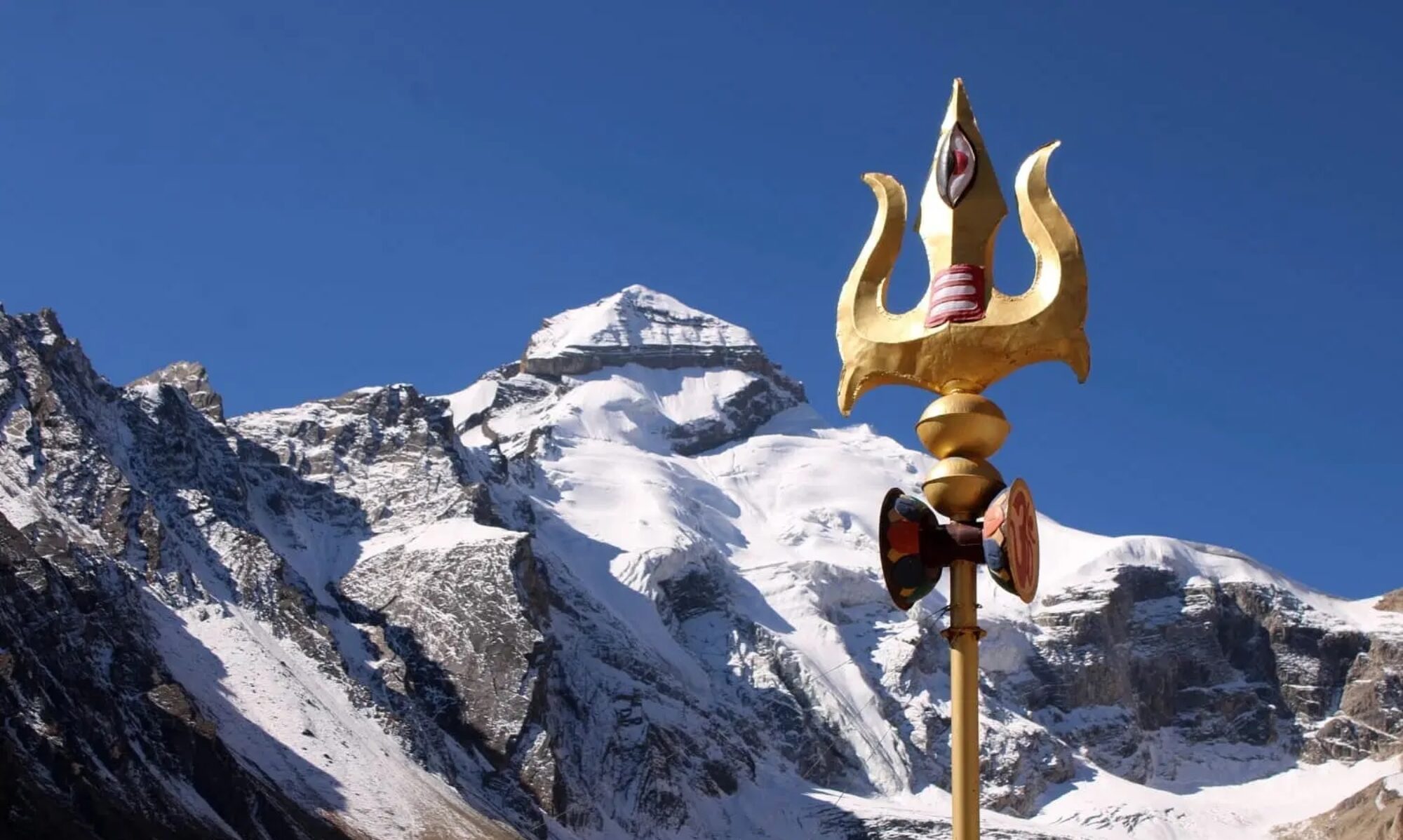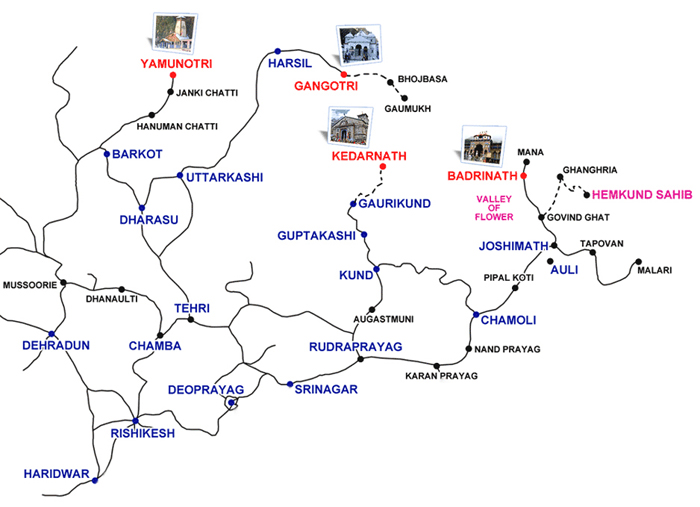Gangotri Dham – the seat of Goddess Ganga is the source of River Ganges. The origin of the holy river is at Gaumukh in Gangotri Glacier, about 19 Kms trek from Gangotri.Gangotri is a Hindu pilgrim town by the banks of River Bhagirathi in the Greater Himalayan Range at the height of 3100mts. The river is called Bhagirathi at source and called Ganga from Devprayag onwards where it meets another river – Alaknanda.
It is said that in ancient times, King Sagar vanquished the demons and then decided to perform an Ashwamegha Yagya to proclaim his supremacy over all. The horse accompanied with King’s sons were sent to travel across all kingdoms for an uninterrupted journey, however Indra- the god king took this as a challenge to his throne and took the horse away only to hide him at the ashram of Sage Kapil. The king’s sons searched for the horse and found it in the ashram. They stormed into the ashram only to be perished by the sage who opened his eyes coming off from deep meditation. Bhagiratha, King Sagar’s grandson meditated to please goddess Ganga to cleanse the ashes of his ancestors and liberate their souls for moksha.
According to another legend, Brahma washed Lord Vishnu’s feet after he had vanquished the evil monkey king Bali and collected the water in his kamandala. It is said that the Goddess Ganga was born out of Brahma’s Kamandala and descended upon earth with tremendous force. Anticipating the destruction it may cause, Lord Shiva slowed it down in his matted locks. At the spot where it happened is a submerged Shivling in Gangotri which is visible during winters.
There is yet another legend according to which Ganga came to earth in human form and married King Shantanu, an ancestor to the Pandavas. She gave birth to Seven children and without any explanations thew them into the river. The eighth was spared due to Shantanu’s intervention and came to be known as Bheeshma who played a major role in the grand hindu epic called the Mahabharata.
The temple is an exquisite 20ft high structure made of white granite constructed in the early 18th century by a Gorkha Commander, Amar Singh Thapa. The stone on which King Bhagirath worshiped Lord Shiva lies near the temple. Another legend associates this stone with the Pandavas, who offered Dev Yagya to atone for the deaths of their own kinsfolk in the battle of Mahabharata.
The temple of Gangotri opens on the auspicious day of Akshaya Tritiya (during the last week of April or the first week of May), following a special Puja of Ganga and closes on the day of Diwali with a formal closing ceremony. During winters, Goddess Ganga is worshiped at Mukhwa(12 km downstream). Aarti is performed at Gangotri Temple by the priests at 6 am and 7.45pm behind the closed doors where public is not allowed. Special pooja is done at Gangotri Temple on the day of Janamshtami, Vijaydashmi and Diwali.
Timings: 6:15 am to 2 pm and 3 pm to 9:30 pm in summer & 6:45 am to 2 pm and 3 pm to 7 pm in winter.


